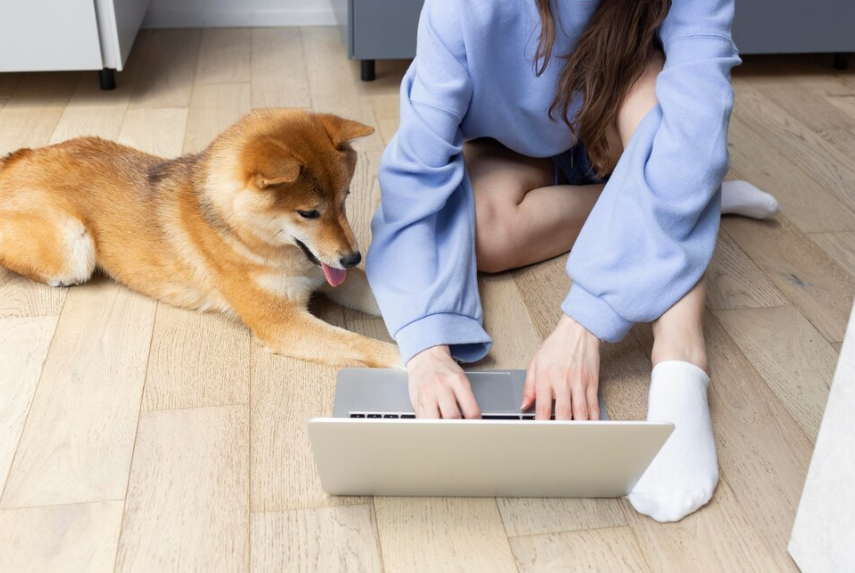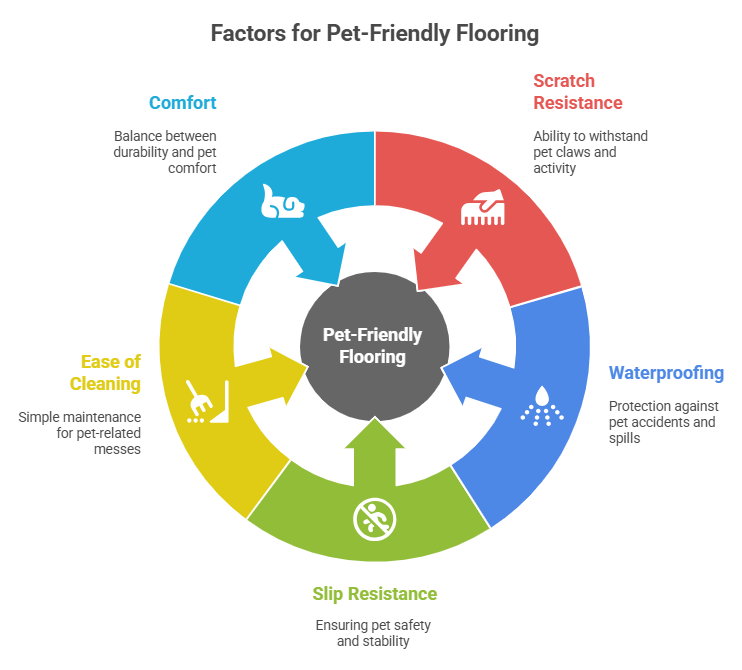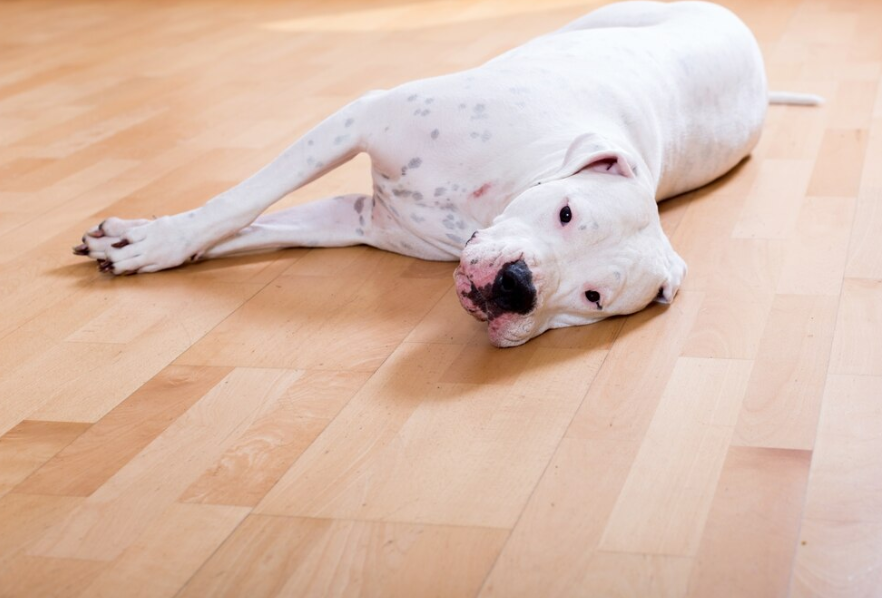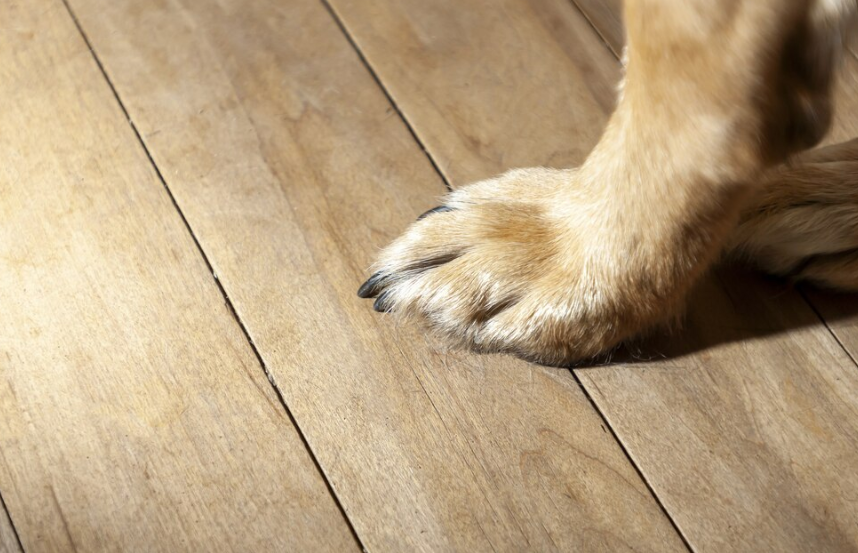Pet owners know the challenge: you want aesthetic floors that match your home, but your pets have different plans.
Furry friends can make a mess on regular floors. They leave muddy paw prints, spill water from their bowls, and can scratch the surface. Sometimes, they even have accidents.
There are real problems: scratches that look bad, tough stains that won’t go away, and slippery floors that make your pets slide.
Picking the best flooring for pets is not only about stopping damage. It’s also about making a safe and comfy space for your animals. You want to keep your home looking good, too.
The question is, how do you find a good balance between looks, strength, and use when choosing flooring that can handle everyday life with pets?
The Selection Criteria for Pet-Friendly Floors
When evaluating flooring for pets, several key factors should guide your decision-making process.
- Scratch resistance stands as the primary concern for most pet owners. Big dogs with strong claws, active cats that enjoy running and playing, or pets that get excited when guests come over can easily damage clean floors. The flooring material must be able to withstand not just occasional contact but the daily wear and tear of pet life.
- Waterproof and stain resistant cannot be overlooked. Pet accidents happen, water bowls get knocked over, and muddy paws track in moisture from outside. The ideal pet-friendly flooring should handle these incidents without permanent damage, warping, or staining. This means looking for materials that won’t absorb liquids or harbor bacteria and odors.
- Slip resistance is crucial for pet safety and comfort. Smooth and slippery surfaces can be dangerous for older pets or those with joint problems. They might hurt themselves or have trouble moving around. Pets should be able to walk, run, and play without losing their footing.
- Ease of cleaning becomes essential when you’re dealing with pet hair, tracked-in dirt, food spills, and other messes that come with pet ownership. The flooring should allow for quick, thorough cleaning without requiring special treatments or professional maintenance.
- Comfort also plays a role, as some pets prefer softer surfaces for lying down, while others need firm footing for stability. The ideal flooring strikes a balance between durability and comfort for both human and animal inhabitants.
Common Flooring Types Comparison
Hardwood
Traditional hardwood flooring offers timeless beauty and can increase home value, but it presents significant challenges for pet owners. Real wood is susceptible to scratches from claws, water damage from spills and accidents, and can be expensive to refinish when damage occurs. While some hardwood species offer better scratch resistance, the cost and maintenance requirements make hardwood a less practical choice for active pet households.
Read More: WPC vs Wood Flooring
Carpet
Carpet provides excellent comfort and slip resistance for pets, making it ideal for older animals or those with joint issues. However, it’s a nightmare for cleanliness and odor control. Pet accidents can penetrate deep into carpet fibers and padding, creating lasting odors and potential health issues. Pet hair becomes embedded in the carpet, making thorough cleaning difficult. For pet owners, carpet is generally not recommended except in specific low-traffic areas.
Laminate
Laminate flooring offers an affordable alternative to hardwood with better scratch resistance than real wood. Modern laminate products have improved significantly in durability and appearance. However, traditional laminate can still show scratches from larger pets, and water damage at the seams remains a concern.
Cork
Cork flooring provides natural antimicrobial properties and excellent comfort underfoot. It’s softer than hardwood, making it more comfortable for pets, and it offers good slip resistance. However, cork can be susceptible to scratches and dents from pet claws, and it requires regular sealing to maintain water resistance. While eco-friendly, cork may not be the most practical choice for homes with large or very active pets.
Tile
Ceramic and porcelain tiles offer excellent water resistance and are virtually scratch-proof. They’re easy to clean and don’t harbor odors or bacteria. However, tile can be cold and hard underfoot, potentially uncomfortable for pets that like to lie on the floor. The grout lines can be challenging to keep clean, and dropped items (including pet toys) are more likely to break on hard tile surfaces.
Read More: SPC Flooring vs Tile
LVT (Luxury Vinyl Tile)
Vinyl flooring for pets has emerged as the clear winner for pet-friendly homes. Luxury Vinyl Tile (LVT) combines the best features needed for pet ownership: exceptional scratch resistance, complete waterproofing, easy cleaning, and slip resistance. Modern LVT products offer realistic wood and stone appearances while providing the durability that pet owners need.
LVT’s scratch-resistant surface can handle even large dogs with enthusiasm, while its waterproof construction means accidents won’t cause permanent damage. The textured surface provides good traction for pets, and the easy-clean surface makes maintenance simple. Additionally, LVT offers comfort underfoot without the maintenance requirements of natural materials.
Which is Better for Pets, Vinyl or Laminate Flooring?
How do vinyl and laminate handle common pet-related issues?
- Moisture from accidents: Vinyl’s waterproof core prevents liquid penetration, while laminate’s wood-fiber core absorbs moisture and can swell or warp over time
- Scratch resistance: Both materials offer scratch protection, but vinyl’s wear layer tends to be more resilient against claw marks than laminate’s surface coating, which may chip
- Cleaning pet messes: Vinyl’s non-porous surface allows complete sanitization, whereas laminate seams can trap odors and bacteria that are difficult to eliminate
- Comfort for pets: Vinyl provides slight cushioning that’s gentler on paws, while laminate offers a firmer, more traditional wood-like feel
- Long-term appearance: Vinyl typically maintains its look better under heavy pet traffic, while laminate may show wear patterns in high-use areas
- Consider your pet’s habits and your cleaning preferences when choosing between these options for your basement space.
So, what’s the best flooring for pet owners?
After digging into expert advice and real-life experiences, one option clearly stands out: Luxury Vinyl Tile (LVT).
Here’s why so many pet parents—and even vets—are choosing LVT for their homes:
- Scratch-resistant, even for big dogs
Flooring specialists like Flooring King and Floors for Paws agree: modern LVT is built to handle claws, zoomies, and the occasional furniture drag.
- Totally waterproof
Whether it’s a puppy accident or a tipped-over water bowl, LVT won’t warp, swell, or stain. That’s a huge plus compared to hardwood or laminate.
- Super easy to clean
No need for fancy tools—just sweep, mop, and you’re good to go. Plus, it won’t trap odors like carpet does.
- Slip-resistant surface for better pet safety
Textured LVT surfaces give pets better traction, which is especially helpful for older animals or breeds prone to joint issues.
- Comfortable underfoot
Unlike cold, hard tile, LVT is comfortable for pets that like to lounge on the floor.
This view is supported by facts. LVT is widely applied in veterinary clinics, and homeowners (and also pet owners) on Reddit also recommend it.
Choosing Quality for Long-Term Success
When determining which flooring is best for pets, the quality of the product matters as much as the material type. High-quality vinyl flooring provides superior performance and longevity compared to budget alternatives. The construction quality, wear layer thickness, and installation method all impact how well the flooring will stand up to pet-related challenges.
For pet owners looking to invest in premium flooring solutions, Boyu’s LVT production line represents the cutting edge of luxury vinyl tile manufacturing. Our advanced production technology ensures consistent quality, enhanced durability, and the performance characteristics that make vinyl flooring the preferred choice for pet-friendly homes. With proper manufacturing standards and quality control, LVT can provide decades of beautiful, functional flooring that keeps both pets and their owners happy.
The investment in quality vinyl flooring pays dividends through reduced maintenance, fewer replacements, and the peace of mind that comes with knowing your floors can handle whatever your pets dish out. When you choose high-quality LVT, you’re not just selecting flooring – you’re choosing a long-term solution that enhances your home while accommodating your pet’s needs.




